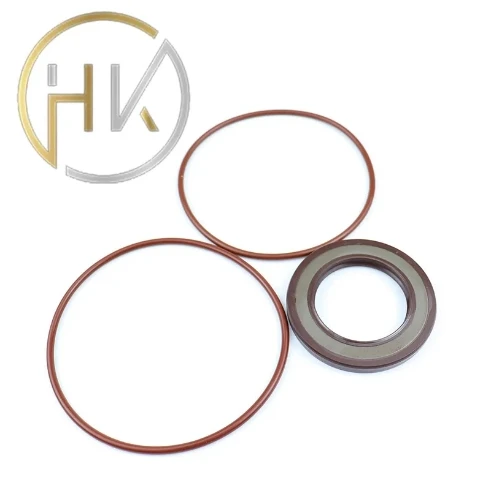Nov . 22, 2024 04:34 Back to list
oil seal for rotating shaft
Understanding Oil Seals for Rotating Shafts
Oil seals are critical components in machinery and mechanical systems, particularly when it comes to rotating shafts. These seals play an essential role in maintaining the efficiency and longevity of equipment by preventing the leakage of lubricants and fluids, keeping contaminants out, and ensuring optimal performance. In this article, we will delve into the significance of oil seals, their construction, types, and applications in rotating shafts.
What is an Oil Seal?
An oil seal, also known as a grease seal or rotary shaft seal, is a device used to retain lubricants in machinery while keeping dirt, dust, and moisture out. They are typically made from elastomers or thermoplastic materials, designed to form a tight seal around rotating shafts. The design of oil seals allows them to operate under various conditions, such as high temperatures and pressures, making them invaluable in many mechanical applications.
Importance of Oil Seals in Rotating Shafts
1. Leak Prevention One of the primary functions of an oil seal is to prevent the leakage of lubricants from the machinery. Proper lubrication is crucial for minimizing friction and wear between moving parts. Without effective seals, lubricants may escape, leading to increased friction, overheating, and premature failure of components.
2. Contamination Protection Oil seals act as barriers against dirt, dust, water, and other contaminants that could enter the machinery. Contaminated lubricants can lead to severe wear and tear, resulting in breakdowns and costly repairs. By preventing such intrusions, oil seals help maintain the integrity of the lubricants and enhance the lifespan of the machinery.
3. Efficiency Enhancement By ensuring that lubricants remain contained and uncontaminated, oil seals contribute to the overall efficiency of the machine. When components operate within their optimal lubrication conditions, they perform better, consume less energy, and produce lower emissions.
Construction of Oil Seals
Oil seals are generally composed of several key components
- Seal Body The primary structure, usually made from rubber, synthetic materials, or thermoplastics, provides the elasticity and strength necessary to create a secure seal around the rotating shaft.
- Lip The sealing lip is vital in oil seals, as it makes contact with the shaft to create a barrier against leaking fluids. The lip may come in different shapes, such as single or double-lip designs, depending on the application requirements.
oil seal for rotating shaft

- Spring Many oil seals feature an internal metal spring that helps maintain the lip's contact with the shaft. This spring ensures that the seal adapts to wear and variations in shaft misalignment.
Types of Oil Seals
Oil seals are available in various designs to cater to different applications
1. Single Lip Oil Seals Typically used in low-pressure applications, these seals provide effective lubrication retention and contamination exclusion.
2. Double Lip Oil Seals These seals are more robust, featuring two lips to offer enhanced protection against contamination while ensuring lubricant retention.
3. V-Ring Seals Used in applications where axial space is limited, V-rings can be fitted directly onto the shaft and create a seal against a stationary counter face.
4. Mechanical Seals In high-pressure situations, mechanical seals may be preferred for their superior sealing capabilities, often utilized in pumps and high-speed machinery.
Applications
Oil seals are widely used across various industries, including automotive, aerospace, manufacturing, and heavy machinery. They are commonly found in engines, gearboxes, hydraulic systems, and many other rotating equipment applications. The effective use of oil seals ensures these systems run smoothly and efficiently, reducing maintenance costs and enhancing reliability.
Conclusion
In conclusion, oil seals for rotating shafts are fundamental components in modern machinery. Their ability to prevent lubricant leakage and protect against contamination plays a vital role in maintaining the efficiency and durability of mechanical systems. By understanding the construction, types, and applications of oil seals, engineers and technicians can make informed decisions that will lead to enhanced performance and longevity of machinery. By prioritizing the use of high-quality oil seals, industries can significantly reduce operational problems and improve overall productivity.
-
TCN Oil Seal Metal Ring Reinforcement for Heavy Machinery
NewsJul.25,2025
-
Rotary Lip Seal Spring-Loaded Design for High-Speed Applications
NewsJul.25,2025
-
Hydraulic Cylinder Seals Polyurethane Material for High-Impact Jobs
NewsJul.25,2025
-
High Pressure Oil Seal Polyurethane Coating Wear Resistance
NewsJul.25,2025
-
Dust Proof Seal Double Lip Design for Construction Equipment
NewsJul.25,2025
-
Hub Seal Polyurethane Wear Resistance in Agricultural Vehicles
NewsJul.25,2025
-
The Trans-formative Journey of Wheel Hub Oil Seals
NewsJun.06,2025
Products categories
















